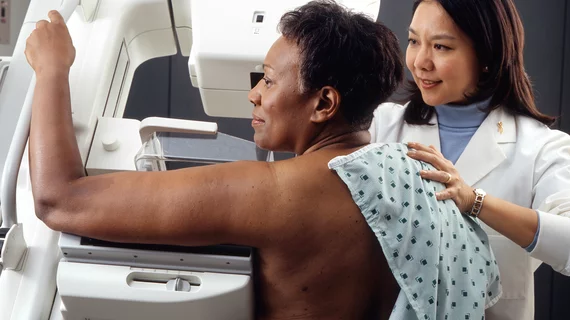Breast density reporting legislation is in place in dozens of states, but according to a new study published by Academic Radiology, confusion about breast density remains high among women receiving mammography screening.
“While breast density laws are designed to educate women about their personal breast density and encourage further discussion with a health practitioner, there is concern that such legislation may cause confusion and/or anxiety in women receiving this information,” wrote Randy C. Miles, MD, MPH, department of radiology at Massachusetts General Hospital in Boston, and colleagues. “Furthermore, many physicians who order mammography examinations report difficulty discussing breast density with women who have dense breasts, particularly since there is no specific recommendation for additional screening in this group. Our objectives were to assess patient awareness and knowledge of breast density and breast density legislation among women receiving routine mammography screening in Massachusetts following recent passage of breast density legislation.”
The authors surveyed women undergoing a screening mammogram over two separate one-week periods at a single academic medical center. More than 300 patients responded to the survey.
Overall, more than 61 percent of respondents were surprised when they received their breast density notification letter. More than 89 percent were unaware of their state’s breast density legislation. More than 54 percent of respondents self-reported having dense breast tissue
“Our findings are in line with prior estimates demonstrating a general lack of knowledge of breast density and breast density legislation among women receiving routine mammography,” the authors wrote. “While many women are familiar with the term ‘breast density,’ inaccuracies in breast density definitions have been shown to be widely prevalent. Misinformation from unreliable resources, especially among ethnic minorities and women from low socioeconomic backgrounds, may play a role.”
In addition, more than 61 percent of women with dense breasts said their breast density meant they had an increased risk of developing breast cancer, and 60 percent of women with non-dense breasts said their breast density meant they did not have an increased risk of developing breast cancer. This, the authors noted, means 40 percent of women with non-dense breasts think they are at an increased breast cancer risk. These findings, Mile et al. noted, suggest “mailed written notification may not be sufficient in educating women about breast density.”
The authors highlighted the importance of future research on this subject. In addition, they added, informed- and shared-decision making sessions between patients and healthcare providers could help lead to less confusion among women who undergo screening mammography.
“Innovative, educational tools targeting both groups may be required to improve communication about breast density and subsequent breast care management,” they concluded.

